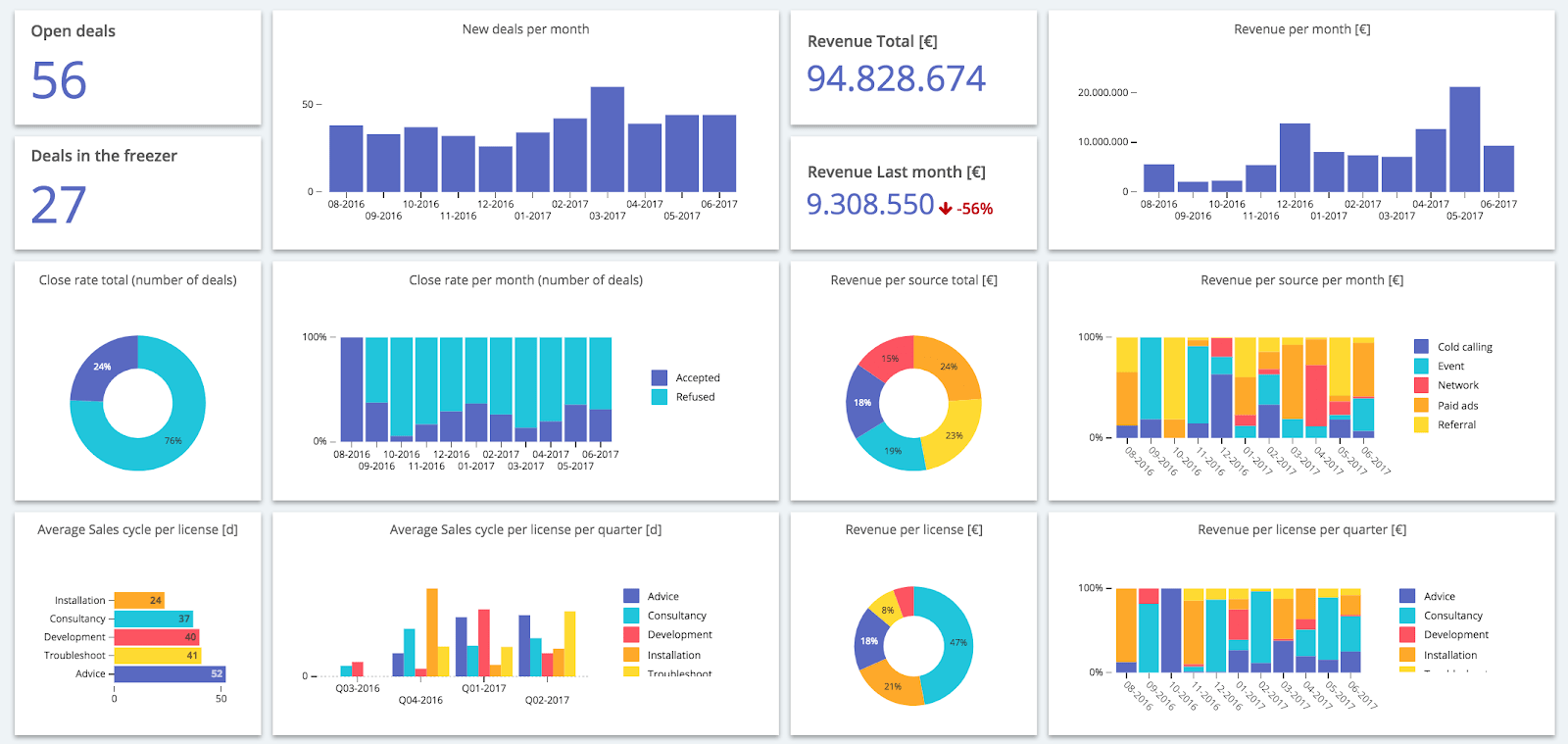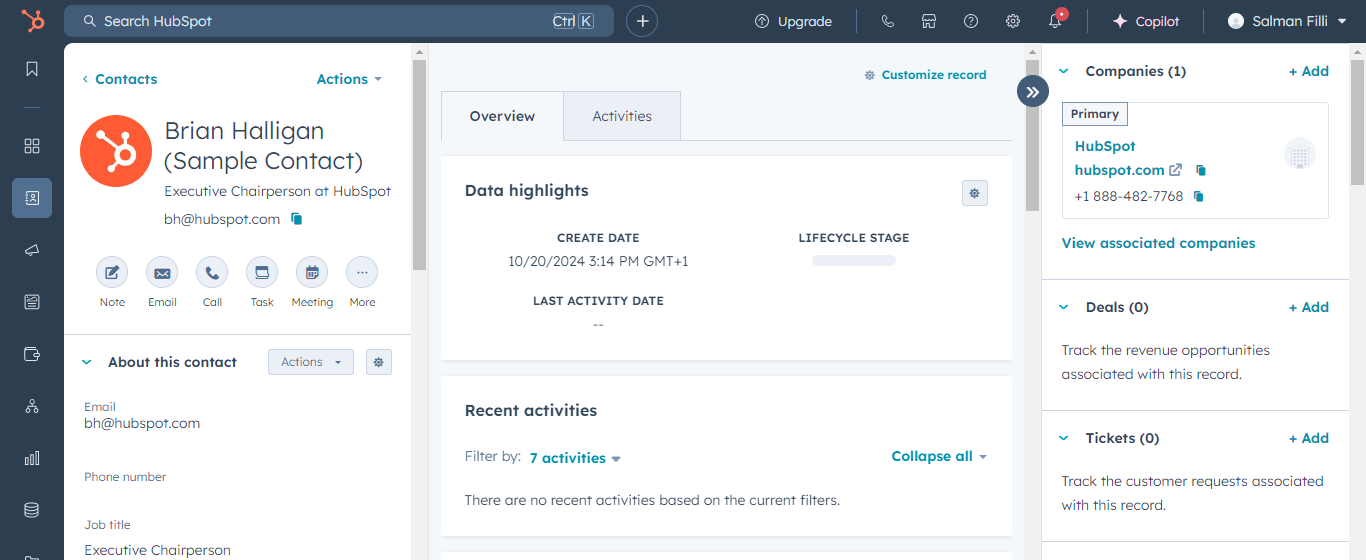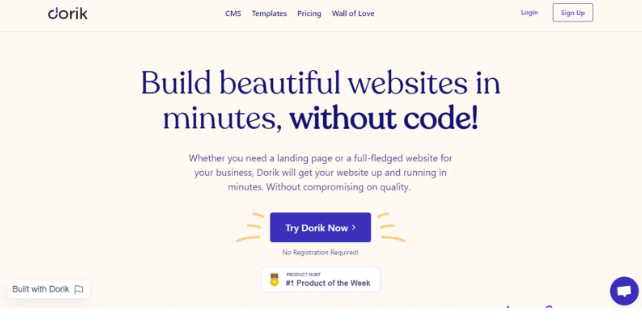SaaS Sales Strategies for 2025: Expert Tips and Mistakes to Avoid
It’s no secret that Software-as-a-Service (SaaS) has become one of the most talked about industries of the digital age. With an expected growth of up to $1.3 trillion by 2032, you can see why this is the case.
However, economic uncertainty, tighter budgets, increased competition, and evolving customer needs have made selling SaaS more challenging than ever.
Traditional methods like cold calling, face-to-face meetings, and marketing channels like conferences are no longer sufficient.
As SaaS has become more saturated, the need to transition to more modern and effective strategies has increased.
This article will provide tips on selling SaaS solutions effectively in the modern age, and critical mistakes to avoid in doing so.
Tip 1: Harnessing The Data
Figure 1. An example of a platform being used to gain data track sales performance
SaaS teams no longer have to rely on gut feeling as they may have done in the past. Nowadays, they have access to unbiased data that offers a complete view of sales performance and growth opportunities.
Various tools help understand and track customer interactions across websites, demos, and marketing material, while AI predictive analytics highlight which leads are most likely to convert, allowing teams to prioritize their sales efforts.
Metrics like lead velocity rate, conversion rate, churn rate, and daily active users provide insights into the success of our product and marketing efforts.
With real-time access to data, SaaS leaders can quickly pivot strategies if something isn’t working without wasting time and missing opportunities. Key recommended tools include Google Analytics and Looker.
We have narrowed down the key mistakes to avoid when using data and analytics:
Neglecting data quality: Not all data is good data, so it’s important to vet the tools you use and make sure that data isn’t outdated or inaccurate to prevent misguided decisions.
Focusing solely on quantitative data: Numbers only show one side of the story, and many leaders ignore qualitative data, which provides context and a more wholesome understanding of the metrics. Not using this can hinder your understanding of your customers.
Inadequate training on these tools: A tool is only as effective as the people using it. If leaders fail to ensure proper training for their teams, they risk undermining the quality of insights gained, as team members won’t be able to fully leverage the capabilities of the tools they use.
Tip 2: Building Relationships
Figure 2. An Example of a CRM being used which can be used to enhance customer relationships
Although the sales industry has shifted to a digital landscape, the principle that people buy from people remains. Building customer relationships through effective communication is key.
Start by understanding your customers' pain points and interests, using data (see tip 1) to personalize your solution with targeted offers and outreach.
It’s important to stand out in crowded inboxes with structured follow-ups, answering questions, and sharing valuable content that relates to their needs.
CRM tools make it easier to segment leads, deliver personalized communication, and provide a central view of interactions, helping teams tailor their sales approach for better results.
Key mistakes to avoid when trying to build relationships with your customers
Overloading prospects with information: Prospects can unsubscribe from your emails and lose interest in your product through the click of a button, so you must be intentional with your content, as excessive promotional content will make your emails look like spam and overwhelm them.
Overlooking current customers: With more than 30% of revenue coming from account expansions and upsells, many leaders concentrate solely on acquiring new customers. They often overlook that maintaining high satisfaction levels among existing customers can lead to increased sales by reducing churn rates, driving upsells, and generating valuable case studies for attracting new clients.
Not offering incentives: Customers need to feel valued for their loyalty, and offering incentives for upselling or referrals can significantly enhance the acquisition of new clients while boosting the success of upselling to existing customers.
Tip 3: Be a Problem Solver
Figure 3. An example of benefits being outlined on a landing page over features
A common mistake leaders make when selling SaaS solutions is focusing on the product's features rather than the outcomes users will achieve or the problems they will solve.
When you emphasize features over benefits, prospects are left to figure out how the solution fits them, making the sales journey about the product rather than the customer, which decreases the chances of them buying from you.
Instead, highlight the business outcomes a feature enables, ideally quantifying the benefits. Your sales and marketing should dive into the root cause of a user's problem and position your solution as the answer.
Key mistakes to avoid when trying to outline benefits over features:
Completely neglecting features: While it's tempting to make big promises about your SaaS solution, incorporating details about features and how they help users achieve specific outcomes adds credibility to your claims, preventing them from sounding like empty promises or dream selling.
Using overly technical jargon when talking about benefits: This can overwhelm non-tech-savvy audiences, which can lead to further confusion as to what the solution will do to them and missed opportunities.
Benefits not tailored to customers: SaaS leaders should focus on benefits that resonate with their target audience rather than highlighting what they assume is important. Leverage the relationships you've built (as mentioned in tip 2) and the data you've gathered (from tip 1) to identify and emphasize the benefits that matter most to your prospects.
Conclusion
SaaS is among the most rewarding industries despite the rise in competition and concerns. Looking to the future, with more sophisticated tools that will enhance aspects such as personalized sales processes, data analysis to receive actionable insights, and communication between sellers and prospects, companies that can leverage these tools correctly will be the ones to succeed in this space.
New strategies will always come and go, but grasping the fundamentals by solving genuine problems, building long-term relationships, and leveraging the information at your disposal to make the best business development decisions will always come first. It will help you stay ahead when selling SaaS solutions in 2025.
How can you take your SaaS sales to the next level? By identifying their unique strengths and market needs, we have successfully helped the sales and marketing of complex SaaS products before. Would you like to see how we can support your team? Contact us and book a free consultation call (30 mins.). We look forward to learning more about your innovative SaaS product!




